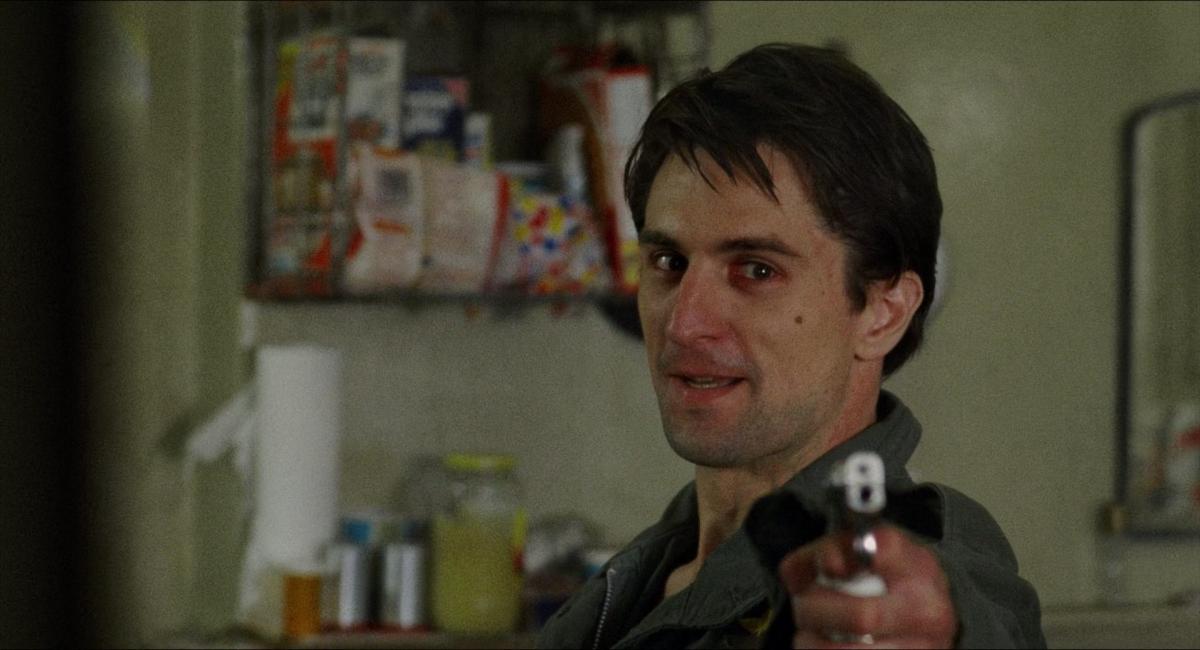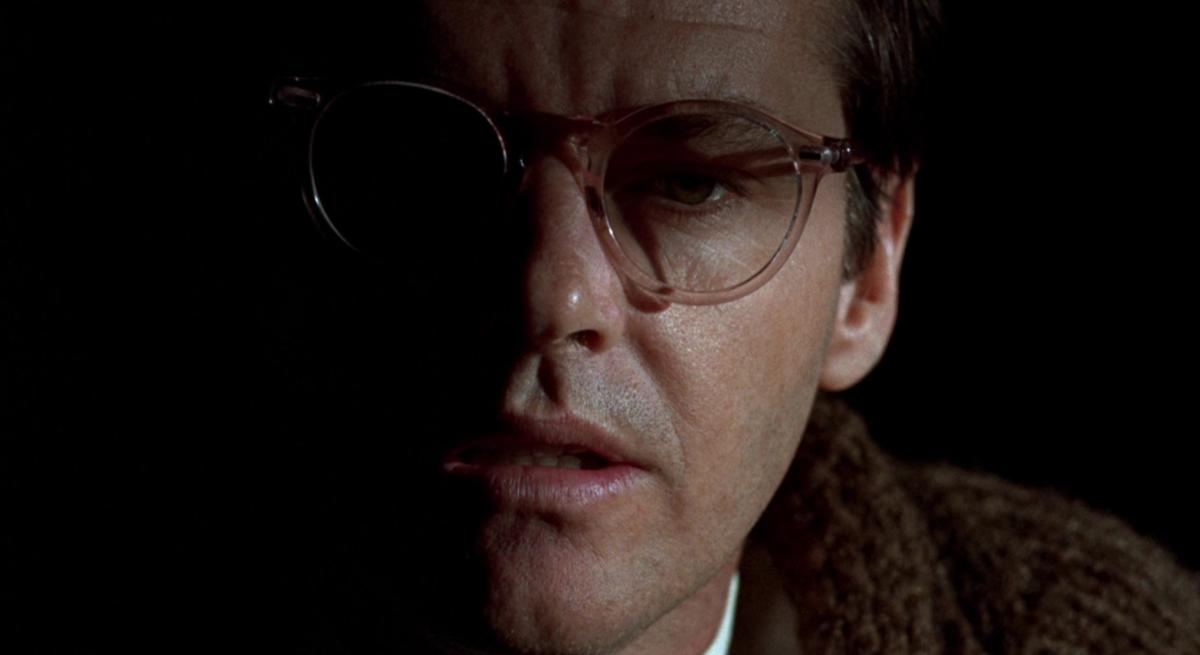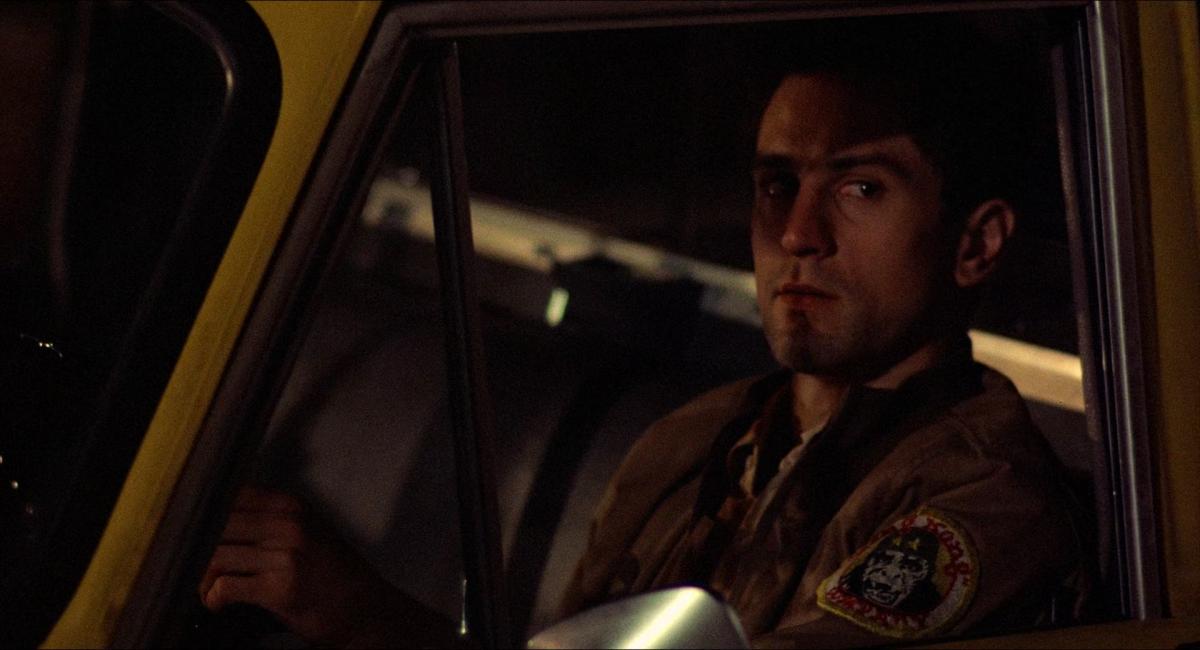New York Hollywood

About Taxi Driver (Martin Scorsese, 1976), Next Stop, Greenwich Village (Paul Mazursky, 1976), The Apprenticeship of Duddy Kravitz (Ted Kotcheff, 1974), The King of Marvin Gardens (Bob Rafelson, 1972). But also about The Fortune (Mike Nichols, 1975), The Sunshine Boys (Herbert Ross, 1875) and Hustle (Robert Aldrich, 1975).
Dwelling
These are films in which the city and the home play an important role. Besides the urban environment (but this innocent “besides” needs to be precisely defined), the personal dwelling environment. Not films about the city, nor about the interior (with the exception of Aldrich’s film), but about the way the urban and the private environments are used – or more precisely the way these environments use and abuse people.
In the late 1960s, films such as Midnight Cowboy (John Schlesinger, 1969) and John and Mary (Peter Yates, 1969) were already heralding a changing relationship between film and environment, between environment and actors. But both films seemed to know very well what place they wanted to give to space, in what way they wanted to approach space. Schlesinger, for instance, dropped his actors into the urban environment and turned that environment into a sort of authentic setting that he portrayed in an authentic, that is, reportage-style way. Yates filmed his love affairs in a sort of ideal interior design: the interior here became a manual for adorning your flat. The new films emphasise the osmosis between the environment and its inhabitants. Very important are the bridges that can be built between the environment and its residents. After all, how do you express this osmosis, at what level do you situate it, in what way do you let it become visible? The contemporary figure seems to me to be: soiling. Not dirt (a visible element of the setting, painted, decorated dirt), but the soiling itself. This ranges from carelessness to apocalyptic soiling (Taxi Driver is a religious description of dirt and its cure). The dirt becomes an active principle: it stains and makes a mess, it neatly arranges the city. Very important in this perspective is the new meaning given to food and the oral.
The Bohemian
It would be interesting to look into whether contemporary American cinema can be meaningfully interpreted as a new cult of the bohemian, and what can be said from that perspective about the preponderance of male actors and adventures in contemporary cinema, about carelessness, the city and dwelling.
Next Stop, Greenwich Village is about that – including the slightly false nostalgia of any bohemia reminiscing. But the other films are either about the margins of society (Taxi Driver), lonely careerists (Duddy Kravitz, Marvin Gardens), or the “last straw” (Fortune and Sunshine Boys).
However, the backgrounds and locations for these various “figures” have become dubious and are no longer of topical interest. Neither marginality nor lonely go-getters are acceptable, alive or credible to the public anymore. In any case, they can no longer be taken seriously; they are at best touching and comical or pitiful. The bohemian can no longer be taken seriously either; he is comical or pitiful, depending on whether you’re sentimental, experienced or inexperienced. And isn’t the “last straw” a classic comical bohemian theme?
The same idea goes for the setting of the bohemian as anti-family, anti-feminine, anti-intimate. The bohemian as active desacralisation of the intimate. Soiling actively practised as profanation of domesticity.
Recall the combatively misogynistic nature of the bohemian and, at the same time, the weepy sentimentality and emotional blackmail he tends to wield towards his mother and girlfriend (see the female parts in Taxi Driver, Duddy Kravitz, Marvin Gardens and The Fortune).
Actors
Jack Nicholson (in both Marvin Gardens and The Fortune) is the perfect expression of this new bohemian. His physiognomy and psychology provide valuable clues to the new “complex” that seems to be becoming increasingly important in American cinema.
More and more directors, screenwriters and perhaps other film crew members too (such as producers and cameramen) are beginning to work on this same psychological portrait.
Both in their films and in their interviews, the new filmmakers give the impression of pushiness, impatience, exhausting ambitions and paranoid know-it-allness. Coppola’s (The Godfather, 1972, The Conversation, 1974), Bogdanovich’s, Spielberg’s (Jaws, 1975) or Scorsese’s way of dealing with film vibrates with impatience. Their ambition for success (financial: Spielberg; artistic-Hollywoodian: Bogdanovich; political: Coppola; autobiographical-artistic: Scorsese) are so lofty that they get in the way. The audience is pounded and pushed towards affirmation. They’re blackmailed. In short, not only the actors, but also the crew behind the camera puts on quite a show. Uses and abuses the medium for all sorts of personal motives. (I refer to the interview with Paul Schrader in Vrij Nederland of 17 July 1976, which puts the young generation of American film workers in a revealingly disconcerting light.)
The actors in front of the camera crystallise this collective energy flow. They play the combination of ambition and inferiority that has always been characteristic of the bohemian. They play the shameless begging for sympathy and recognition.
They tend to be ugly actors, looking slightly strange and lacking the aura of the classic star. They compensate for this shortcoming by means of an unbridled waste of energy, unbridled overacting, a firework display of acts in which the actors show a great fondness for the eruption of pent-up frustrations.
In the 1950s, the new American actor was formed by the Actor’s Studio. At the end of the 1960s, the next generation of actors arrived, manifesting themselves alongside established Hollywood actors (from Bronson and Heston to Newman, from Reynolds to Scott) in very different kinds of films. The common denominator of Al Pacino, Dustin Hoffman, Jack Nicholson, Robert de Niro, and Richard Dreyfuss? They aren’t introverted or haughty like Actor’s Studio actors: they’re exuberant, dynamic, aggressive. They’re not masochistic (Dean, Brando) but sadistic (Dreyfuss and Nicholson). They’re not neurotic but psychotic (De Niro). They aren’t looking for recognition but confirmation. They aren’t playing for the audience but for themselves.

Orality
The mouth of male actors has taken on a whole new meaning. The mouth of Gary Cooper or James Stewart was part of a face and not visible in isolation. Women accentuated their lips with lipstick, men had neutral mouths. This changes with Lewis (the comical version) and the Actor’s Studio actors (the serious version).
The mouth is more than lips and teeth: it here becomes a mouth cavity. First and foremost because the actors no longer articulate for comic or expressive effect. The mouth is no longer functional (a clear organ of speech) but produces noise that obscures the text. Lewis also plays on the tongue in his mouth, and his face-pulling is a feast of infantile orality (as Chaplin and Laurel & Hardy played on anality, which Lewis no longer does). With Lewis, the kissing that Hollywood had lost the hang of because of censorship becomes an intricate technical acrobatics.
As oral sexuality becomes widely accepted visually through pornography, the new actors of non-marginal film develop a sadistic variant of orality. The mouth doesn’t just caress, it bites, too. It’s not only erotic but also sexual. It’s not only functional (talking, eating) but also sensual (the pleasure of masticating and producing sounds). The mouth is no longer only an organ of intimacy (of eating and kissing) but needs another thing (food) and another person (through love) for its completion. The mouth is a self-indulgent organ, no longer the site of interpersonal communication (language/eroticism/food) but of demarcation and closing off. Nicholson’s mouth is at once obscene and puritanical, an exhibitionist parade that is not aimed at seduction but at deterrence.
Tolerance
Nineteenth-century bohemians aimed to provoke citizens and mainly found their own place and identity in the distance that separated the two worlds. A distance that, however, must never become so great that indifference (invisibility) sets in. Bohemians and citizens must remain in each other’s sight!
The new bohemian also provokes, not to achieve distance and demarcation but to be recognised. The active pole here is not the bohemian but the public. A public that needs not only artistic progress (avant-garde) but also moral-social progress (emancipation).
The new bohemian is the entity in mass culture that provides the media and their audiences with new exercises and sensations of tolerance. Around this sensitive spot in contemporary consciousness, an entire casuistry of (in)tolerance emerges. The new bohemian provides liberal consciousness with complicated cases against which anyone can test their tolerance flexibility and measure their tolerance threshold. Tolerance has ended up in a quantitative reflex theory, deprived of content and reduced to a technical tour de force. The morality of tolerance included into the morality of performance and progress! (Read the reviews of Taxi Driver.)

Images (1) & (3) from Taxi Driver (Martin Scorsese, 1976)
Image (2) from The King of Marvin Gardens (Bob Rafelson, 1972)
This text originally appeared in Kunst & Cultuur 9, no. 14 (16 September 1976).
This translation was published by courtesy of Reinhilde Weyns and Bart Meuleman.
With the support of LUCA School of Arts, LUCA.breakoutproject.

